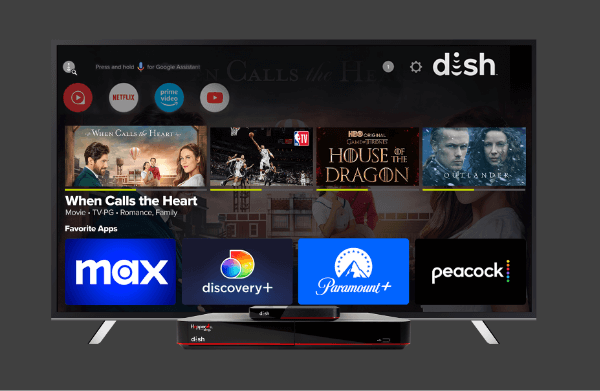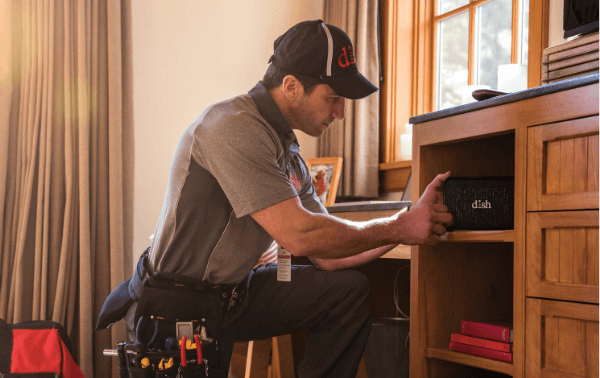Congratulations, you qualify for deals on DISH TV plus Internet in your area!

Exclusive Offers for Our Heroes!
DISH honors those aged 55+, Educators, Healthcare Professionals, First Responders, and Military Members with special perks:
- Enjoy a free monthly movie rental - a $165 yearly gift.
- Receive the Stars & Stripes Pack - saving $240 over two years.
- Get the Heartland Pack on us - a $144 bonus.
- Plus, upgrade to our Hopper DVR for mobile streaming of your full TV lineup at no extra charge!

DISH Signal Reliability Guarantee
Stay connected with a reliable signal that’s backed by our Reliability Guarantee. Our 24/7 monitoring ensures that you’re always connected to what matters most, or your money back.
Limited time offer, subject to change. Available only to new or returning former customers.

FREE DISH Voice Remote
Simplify your entertainment with DISH’s Voice Remote. You can search live and recorded programming, adjust lighting, and control other smart devices, all with just your voice.

Transform your viewing habits with the Hopper 3 Smart HD DVR and the new Hopper Plus. It’s more than just TV – enjoy live and record programs, top streaming applications, intuitive smart home management, and an array of games and music at your fingertips.

FREE Next Day Installation
Discover the convenience of DISH’s FREE standard installation. Save $199 and get set up with our Standard Professional Installation service as soon as tomorrow.
- Unlimited talk, text & data
- 10GB mobile hotspot
- WiFi calling
- Unlimited international texting
- No contracts, hidden fees or surprise data overages charges


following options:
- Llamadas, mensajes y datos ilimitados
- 10GB de hotspot móvil
- Llamadas por WiFi
- Mensajes de texto internacionales ilimitados
- Sin contratos, tarifas ocultas o cargos sorpresa por exceso de datos


siguientes opciones:

 Call
Call  Access Your Account
Access Your Account